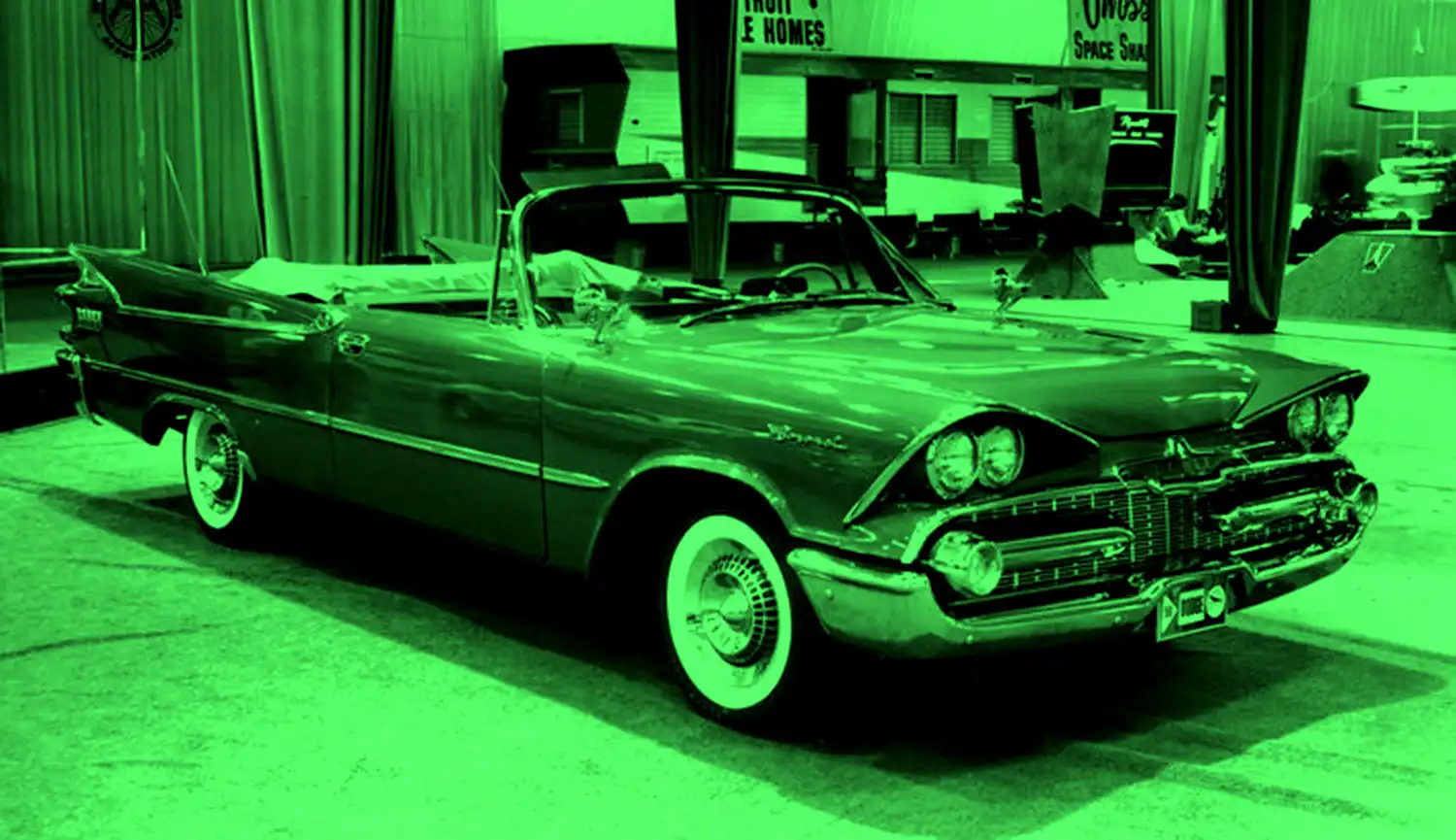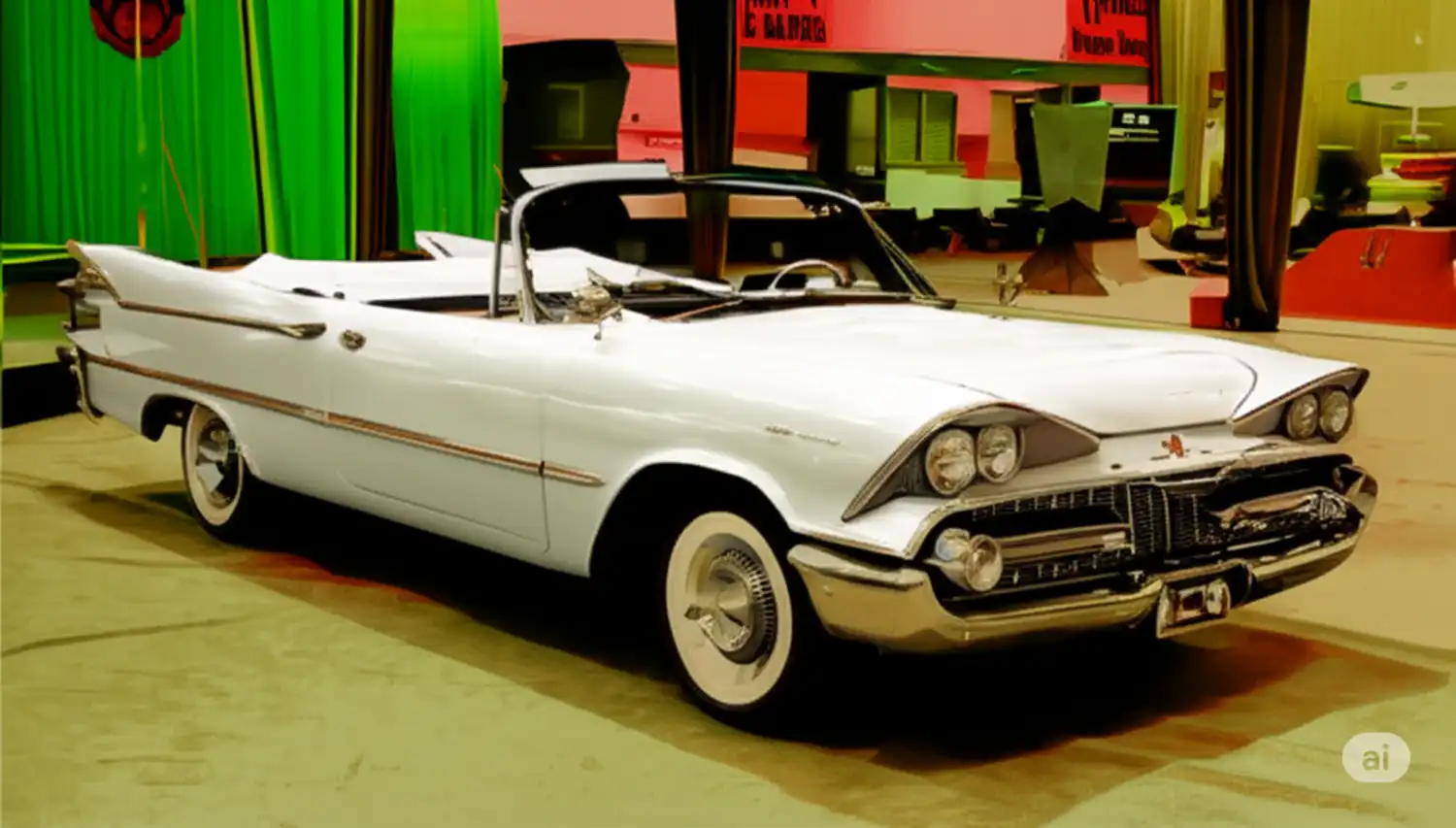
The 1959 Dodge Coronet convertible emerged during a time of dramatic styling. This car arrived in the American automotive landscape. The Coronet nameplate had a long history with Dodge. It first appeared in 1949. It represented the division’s top trim level then. Over subsequent years, it shifted positions. By 1959, it became a mid-range offering. The 1959 model year was truly significant. It featured a bold and distinctive design. Dramatic tailfins characterized its appearance. Sweeping body lines also defined its look. A wide, imposing front grille completed the design. The convertible version embodied open-air motoring. It offered a stylish and enjoyable way to experience the road. The 1959 model year was unique in its styling. The Coronet nameplate continued through generations. It evolved in design and market positioning.
Engine and Performance Options
The 1959 Dodge Coronet convertible offered diverse engine options. These suited different buyer preferences and performance needs. The standard engine was typically a reliable inline six-cylinder. It provided adequate power for daily driving. For those seeking more spirited performance, Dodge offered various V8 engines. These V8 options ranged in displacement. They also varied in power output. Some offered significantly more horsepower. They delivered more torque for quicker acceleration. This created a more engaging driving experience. Depending on the engine chosen, the convertible delivered either comfortable cruising. It could also offer a more thrilling ride.
Power and Performance Highlights
Engine choices for the 1959 Dodge Coronet convertible were plentiful. A standard 230 cubic inch “Getaway” inline six-cylinder produced around 135 horsepower. For increased power, buyers could opt for various V8 engines. The 326 cubic inch “Red Ram” V8 offered upwards of 260 horsepower. This depended on the specific configuration. The top-of-the-line performance option was a version. This was often the 361 cubic inch “D-500” V8. It could generate around 300 horsepower. These powerful V8 engines provided significantly enhanced acceleration. They delivered a more powerful driving feel. Performance figures varied based on the specific engine. They also depended on the transmission combination. The V8-equipped convertibles offered respectable acceleration for their era. They comfortably reached highway speeds. They also provided ample power for cruising.
Interior Design and Comfort
The interior of the 1959 Dodge Coronet convertible focused on comfort. It was designed with passenger style in mind. Typically featuring bench seats in front and rear, it accommodated six occupants. Upholstery options varied widely. They often included durable fabrics and vinyls. These came in a range of colors. They complemented the exterior paint choices well. The dashboard design was characteristic of the late fifties. It featured a wide, sweeping layout. Chrome accents added flair. Clearly legible gauges provided information. Standard features included a heater and defroster. Optional features enhanced convenience. These included air conditioning, power steering, and power brakes. The convertible top mechanism was usually power-operated. This allowed for easy raising and lowering.
Distinctive Exterior Styling
The exterior styling of the 1959 Dodge Coronet convertible was truly distinctive. Its dramatic tailfins were a hallmark of late-1950s American car design. They were prominently featured. This gave the car a futuristic and flamboyant appearance. Sweeping body lines often had chrome trim. This trim ran along the sides of the vehicle. It contributed to its dynamic look. The front end was characterized by a wide grille. This often incorporated quad headlights. Substantial chrome bumpers added to the car’s imposing presence. The convertible top, when lowered, typically folded neatly. It rested behind the rear seats. This maintained a clean and stylish profile. Wheel covers were often ornate. They reflected the era’s emphasis on visual flair. The overall design aimed to make a statement. It captured the optimism and forward-looking spirit of the time.
Historical Significance and Appeal
The 1959 Dodge Coronet convertible holds a significant place. It is a prime example of late-1950s American styling. Its bold design elements, especially the dramatic tailfins, made it recognizable. It is a collectible classic car today. For enthusiasts of this era, the Coronet convertible represents a blend of style. It also offers open-air enjoyment. Later generations of the Coronet evolved significantly. This happened in terms of design and market positioning. The 1959 model remains a unique representation of its time. Its appeal lies in its distinctive aesthetics. It also connects to a nostalgic, bygone era of automotive design. This car continues to captivate enthusiasts.
The 1959 Dodge Coronet convertible embodies an iconic period in automotive history. Its distinctive styling, highlighted by dramatic tailfins, perfectly captures the spirit of its era. With a range of powerful V8 engine options and an emphasis on passenger comfort, this classic car offers a unique blend of performance and open-air enjoyment. Its enduring appeal cements its status as a true automotive icon.
Disclaimer Please note that historical vehicle information is based on available records and common specifications of the era. Individual vehicle details may vary depending on original options, modifications, and preservation status. Always conduct thorough due diligence when considering any classic vehicle.
Source: Stellantis
AI Assistance: Chatgpt & Gemini
